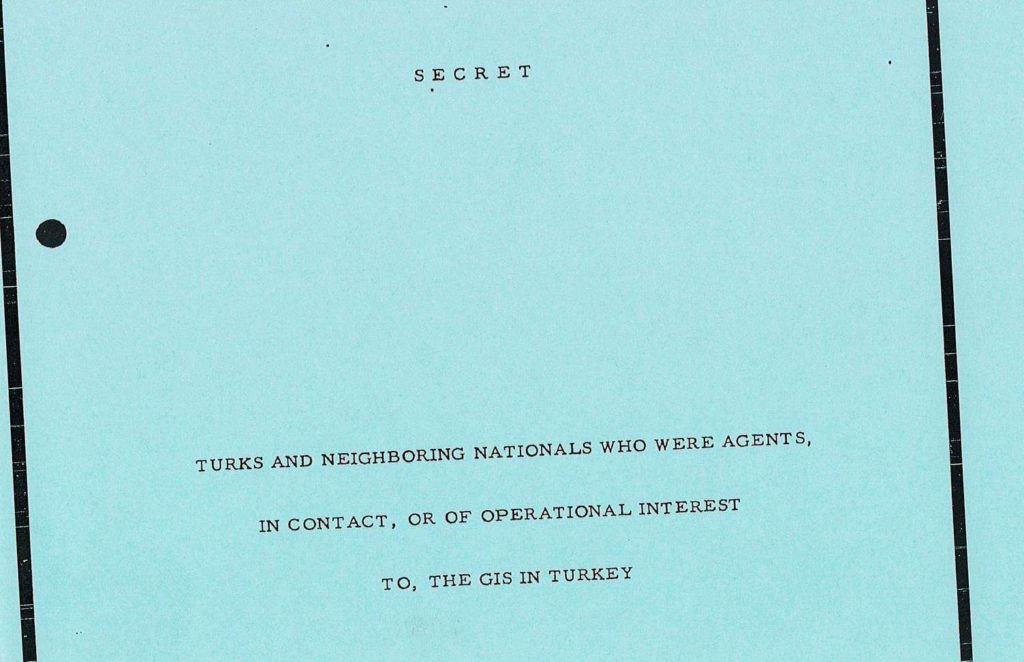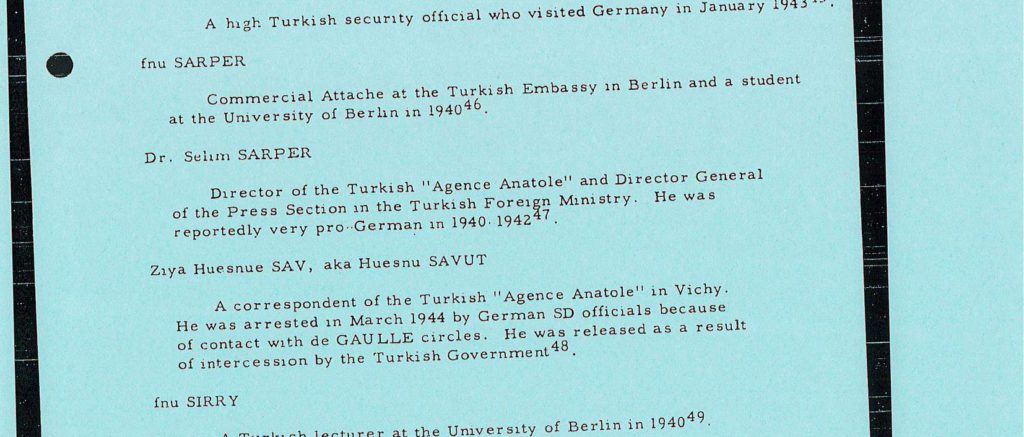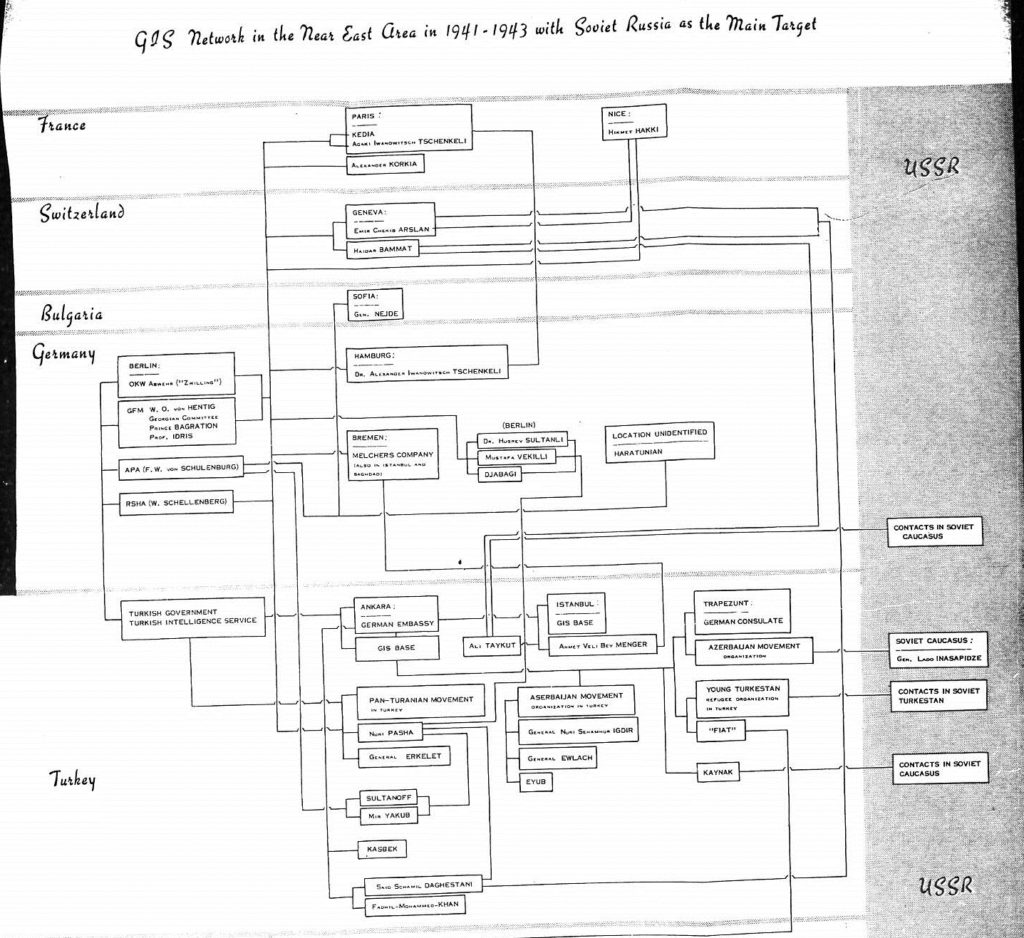– Documents presented by Onur İşçi
When Allied forces entered Berlin in 1945, they confiscated numerous confidential papers that the Third Reich had failed to destroy. Apart from those that the Soviets transferred to Moscow, the captured German files were originally held in England. They were later microfilmed and returned to the Bonn government, but copies were forwarded to the Department of State in Washington D.C. As the Cold War unfolded, historians first catalogued and then scrutinized them to understand Nazi diplomatic and political activities in different regional contexts, including the Middle East. Initial surveys were conducted mostly for purposes of academic research and contained very few details of counterintelligence significance. As the Cold War entered a new phase in the late 1950s, the CIA began working on the German Intelligence Service (GIS) papers to fill that gap and compile the names of WWII veterans that might still be of interest to the agency.
Around late 2016, I came across a fascinating report while browsing the CIA records search tool (CREST) stationed at the National Archives II in College Park, Maryland. Sanitized for release in 2014, this 338-page survey is about Nazi intelligence activities in the Near East and contained a detailed section on “Turks and neighboring nationals who were agents, in contact, or of operational interest to, the German Intelligence Service in Turkey.”
Overall, this report is significant for a number of reasons. First, it includes personal details and wartime dealings of well-known Turkish leaders as well as less-prominent “neighboring nationals” who worked for or were of interest to the GIS during World War II. Second, it illustrates that the US government, in its drive to rollback communism, was interested in the people who had collaborated with the Nazis for a similar cause. Third, it illustrates that neutral Turkey was caught up in the meshes of a spy network of which the Cicero conspiracy was only the most famous element. It has several other intriguing aspects, which I explained to in my latest article published in the Journal of Contemporary History.
In January 2017, a few weeks after I discovered the GIS report, the CIA published over 11 million pages of declassified documents in a new platform and the GIS report is now available online. Here, I will share some of its highlights.
- Although the Turkish Government was not unfavorably disposed toward the Western Allies, two conditions favored GIS operations in Turkey during World War II. One was the good relations which existed between Turkish and German military leaders; the other was the mutual desire to eliminate the threat posed by the Soviet Union. Because of the Turkish attitude toward the USSR, the Turkish government not only permitted the GIS to conduct anti-Soviet operations from Turkey, but also afforded a degree of cooperation in intelligence efforts.
- As a case in point: In August 1942, the Secretary General of the Turkish Foreign Ministry, Numan Rıfaat (sic) Menemencioğlu submitted intelligence information on the Soviet Union to the German Ambassador, Franz von Papen together with a request for reciprocal arrangements. In September 1942, it was alleged that Menemencioğlu was a drug addict and an alcoholic (frame 78309, Serial 138).
- After 1943, Security Service (SD) officer Ludwig Moyzisch of “CICERO” fame, maintained regular liaison with information which extended beyond the specific Soviet target. This cooperation was revealed by Dr. Erich Vermehren, a member of the Abwehr base in İstanbul, on his defection to the Allies in February 1944, causing not only a great consternation in GIS circles but the prompt lodging of a protest by the Soviet Government with the Turks. The subsequent jockeying led the GIS to arrest two Turkish agents, Ziya Hüsnü SAV in Vichy and Nerin Enrullah GUEN (sic). The agents were working in Budapest as “Agence Anatole” correspondents.
- The Turkish Security Service attempted to keep a watchful eye on GIS activities and operation in Turkey and sometimes took action when it detected GIS efforts against “off-limits” (i.e. non-Soviet) targets. In April 1941, for example, the Turks picked up a GIS agent who was alleged to be engaged in operations against Allied shipping from Greek and Turkish ports.
- By March 1944, German personnel working for the GIS in Turkey totaled about 36 to 40 officials, comprising personnel of the Abwehr, the Security Service, the NSDAP Organization of Germans Abroad – AO – and a few officials of detached service from other agencies.
See: Central Intelligence Agency (hereafter CIA), “Turks and Neighboring Nationals who were Agents, In Contact, or of Operational Interest to the German Intelligence Service in Turkey” (CIA–RDP81–01043R0035000800004–7), 171–189. Accessed in the National Archives (College Park, Maryland) on 16 November 2016 through CIA Records Search Tool (CREST).




